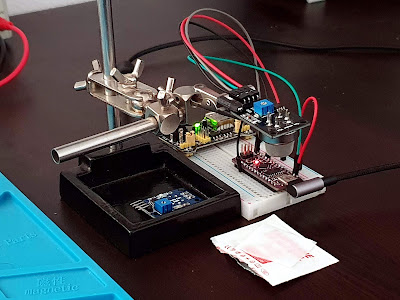-
chevron_right
CO and LPG gas sensor with Arduino and LCD
pubsub.slavino.sk / onetransistor · Sunday, 15 January, 2023 - 14:09 edit
In a previous post I looked at a MQ-9 sensor module. Unfortunately, although the sensor can detect CO and LPG, it cannot be used as it is wired in the module. After analyzing the datasheet I figured the best thing to do is remove it from existing PCB and build my own. In short, like other sensors from MQ family, MQ-9 has a heater resistor inside. In order to get any useful reading from it, this resistor must be heated at 5 V for 60 seconds, then cooled at 1.4 V for 90 seconds. The same is true for MQ-7. The issue with modules is that all sensors from MQ family are fitted on the same PCB design.
In this post, I'll share two other methods of powering the heater resistor and I will design a PCB. Sensor readings will be displayed on an alphanumeric LCD powered by Arduino. Since real ppm is temperature and humidity dependent, I will provide a PCB header for DHT sensor. I already tested the sensor with the LM317 power supply I built in the previous post, and I did some measurements.
Read moreZnačky: #Gas, #Sensor, #Electronics, #Elektro, #MQ-9, #Arduino






